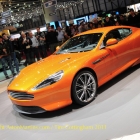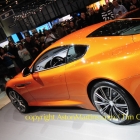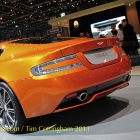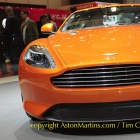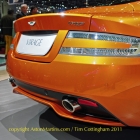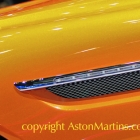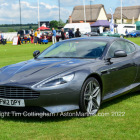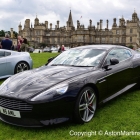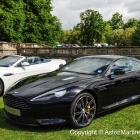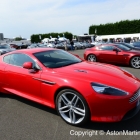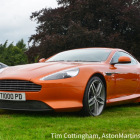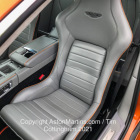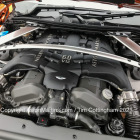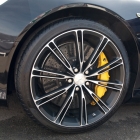The Bi-xenon headlamps with LED side lights / indicators have already been used on the 4 door Rapide and the new grille was inspired by the one used on the One-77 where the five horizontal vanes have an aerofoil profile. The side strakes were the longest ever used on a production Aston Martin and ran above the grille aperture for the first time rather than the traditional middle line. A new innovation in windscreen wipers was made with the Virage which used a ‘beam blade’ wiper design, incorporating Bosch Aerotwin wiper blades. Not only was it claimed to work better than conventional wipers, they also looked neater too. At the rear, the body coloured diffuser stretched almost the full width of the car.
The interior followed that of the DB9 and DBS, complete with the wonderful glass buttons fitted as standard but it was also given a new contrasting pinstripe welt throughout the cabin. The Virage, like the DBS could be spec’ed with either regular 2+2 seating or 2+0 which used the AM lightweight carbon fibre and Kevlar seats. The 2+0 car wasn’t available in North America and is actually quite rare. AM made special note of the complete new SatNav system from Garmin using a larger 6.5 inch screen replacing the previously used Volvo unit. Shortly after the Virage introduction, the Garmin unit was also be made available on all the other models in the range too. Particular attention was given to making the Virage more refined than the DB9, especially drawing on experience with the Rapide. One of the ways this was achieved was with additional sound insulation on the front and rear bulkheads. Another was a revised version of the adaptive damping system, developed with Bilstein as also used on the DBS but tuned for a GT rather than a sportscar as in the DBS. On start-up, the ADS is in ‘Normal’ mode but also the system offers a ‘Sport’ mode which moves the dampers to their firmest setting.
The V12 engine, still with a displacement of 5935 cm2 but with an improved output of 490 bhp (neatly between the 470 bhp of the DB9 and 510 bhp of the DBS) was mated to the familiar Touchtronic 2 transmission: there was no manual transmission option. Part of the reason for the increase in power was the use of a new inlet manifold, distinguished by being painted in black. The brakes were based on those already in use on the DBS with cross drilled Carbon Ceramic Matrix discs.
The Virage lasted in production for only a single year with 1044 examples built (656 coupes and 388 Volantes) and as such is one of the rarest of the Gaydon VH Aston Martins. It was replaced by the ‘new Gen 4’ DB9 which is best described as a Virage complete with the Vanquish AM11 spec engine and revised front crash structure.





